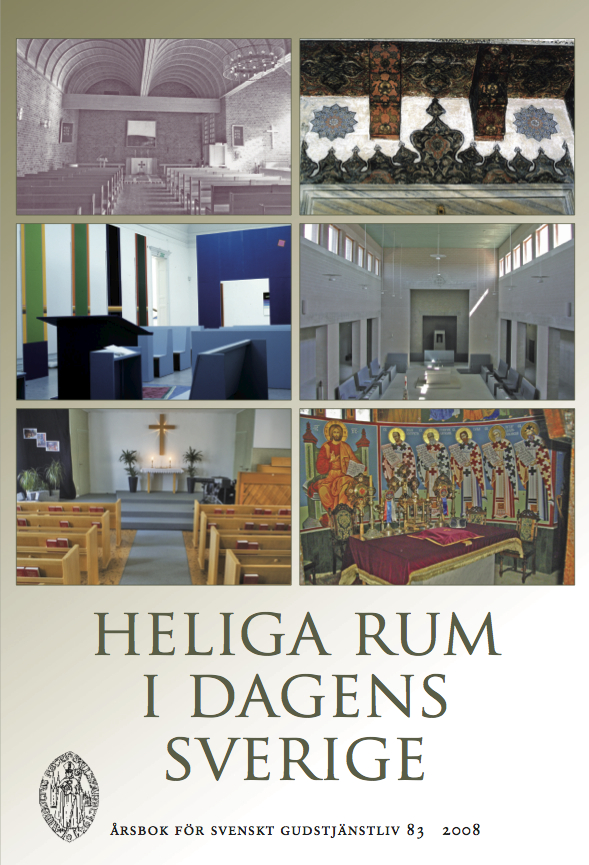Aspekter på det heliga rummet inom Svenska kyrkan
Abstract
Aspects of the Holy Space in the Church of Sweden
The aim of this study is to discuss how the interior of the church building and its decoration in the 20th century was designed to express that a church is a sacred place, dedicated to the meeting between God and man. Church interiors dating from early to late 20th century are briefly analyzed, together with statements from architects and people occupied with questions about the sacred dimensions of art and architecture. A common view is that the 19th century was a period of negligence concerning aesthetic church matters and to some degree this is true. But as early as during the last part of the 19th century there was a aesthetic revival in the Church of Sweden, inspired from continental, mainly German Romantic piety and the new academic discipline of art history. It was a new interest in tradition, symbolic meaning and the aesthetic character of the church interior, combined with historic research and antiquarian ambitions.
The church building as a monument of the grace of God offered to all Swedes is the theme of the Engelbrekt’s church in Stockholm of 1914. The architect Lars Israel Wahlman wanted a huge room with balanced forms, rhythmic light and colour and a lot of signs and symbols signifying the main dogmas of the Christian faith and at the same time applying to the fantasy of the visitor. The choir must have the character of a sanctuary and the role of the sacraments should be underlined.
A church building is consecrated to be a special place, a meeting place between God and man. To use a notion from Michel Foucault it could be called a heterotopy, an existing place but with its own rules, different from the normal everyday places in human life. The ritual of the inauguration of a church is an important document of how this heterotopy is brought about. The church dedication ritual in the service-book Den svenska kyrkohandboken from 1942, similar to the late 19th century one, underlines the holiness of God and the blessing moments of the consecration: »and may this temple be dedicated to the Lord, to his service and cult, blessed are these walls [...]». The latest Swedish consecration ritual dates from 1987. Underlined in that ritual are the liturgical movements, the procession from object to object and the consecration formula for each one.
After the continental devastation of the Second World War there was a need of many new church buildings and a renewed interest in the liturgical aspects of church architecture. This affected even the situation in Sweden and one important contribution to this movement is Axel Rappe’s thesis Domus ecclesiae. Studier i nutida kyrkoarkitektur (1962), dealing with fundamental aspects of church architecture looked upon from liturgical praxis, where liturgical participation of the parish and the possibility of gathering around and close to the core actions, i.e. the sacraments, are stressed. Church buildings in Sweden in the decades from 1960 to 1990 can be compared to and interpreted according to the main aspects of the thesis, e.g. the Almtuna church (1959) and St Per’s church (1987) in Uppsala. Around 2000 there was diminishing interest in liturgical and traditional matters, instead functional aspects on one hand and on the other the relation between everyday, weekday life of the parish members and the service were to be expressed. Viksjö church (2005) in the northern part of Stockholm may serve as an example of this tendency.Downloads
Published
Issue
Section
License
© the authors, Laurentius Petri Sällskapet för Svenskt Gudstjänstliv and Artos & Norma Bokförlag. Copying and using material from Svenskt Gudstjänstliv for scholarly purposes is permitted as long as the source is indicated. For other uses, please contact the respective author as well as the publisher. Special restrictions may apply to images.


